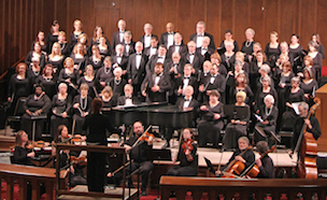Duke Performances has continued its outstanding and eclectic season of concerts with a unique tribute to the late jazz singer Billie Holiday (on the occasion of what would have been her centennial on April 7th) by the current jazz “diva” – in the best sense of the word! – Cassandra Wilson. As an accomplished musician herself, Wilson has assembled an unusual and creative group of instrumentalists to augment her interpretation of Billie Holiday’s art to the current era. A conventional rhythm section of keyboards, upright bass and drums were augmented by woodwinds, guitar, mandolin and violin; this ensemble opened the evening with a mélange of electronic and acoustic tones and rhythmic patterns cleverly developed to enable an almost ethereal entrance some minutes later by Wilson, who then subtly eased into three very slow and sultry ballads that clearly were evocative of Holiday’s relatively short life (she died in 1959 at age 44). This life was one largely of troubles with her relationships, drugs and the general working conditions for jazz musicians of the period. Readers might want to get a broader perspective on her life from a recent NPR piece by jazz critic Kevin Whitehead here or the transcript here.
While Wilson’s sultry, almost languid, approach permeated every song, the rhythmic pulse did slowly accelerate especially on her versions of Holiday’s and Arthur Herzog’s “Don’t Explain” and the Harry Woods 1934 classic “What a Little Moonlight Can Do.” Wilson’s interpretations revealed her capacity and talent for adding new perspectives to the music, something that is of course fundamental to the jazz idiom. For example, creating room for instrumental solos that add color to the vocal performance was particularly evident with Charlie Burnham’s lively violin solo on Eric Maschwitz and Jack Strachey’s “These Foolish Things.” However probably the most interesting soloist of the evening was Robby Marshall, who played bass clarinet, saxophone, flute and regular clarinet – both singly and sometimes multiply (i.e. the bass and regular clarinets) as on their final piece that was unannounced. While Marshall was featured on other pieces playing the bass clarinet, an instrument that is rare in a jazz ensemble, it blended perfectly with Wilson’s velvety low tones.
While the addition of guitar/mandolin player Kevin Breit added a significant edge to the ensemble, it was somewhat surprising that the basic rhythm section of keyboards, drums and bass were not featured with any solos. In particular, bassist Lonnie Plaxico is a highly respected and well-known musician who won the prestigious Louis Armstrong Jazz Award in 1978 and has been musical director for Wilson’s tour band for over 15 years. It would have been nice to have heard more from him.
Two pieces in particular reflected Holiday’s persona. One was Wilson’s composition written upon the death of Holiday’s “soul mate” saxophonist Lester Young; she had intended to sing it at his funeral, but was not permitted to do so, much to her distress. It was simply titled “Last Song (For Lester).” The other was her well-choreographed encore piece for which Holiday was probably most renowned, her composition (again with Herzog) “God Bless the Child.” Both were performed more in the (slow) swing style of Holiday’s era, in contrast, however, to most of the tunes earlier in the evening. These had a slow to medium rock back-beat that tended to be somewhat repetitive and monotonous throughout the 90 minute show, even allowing for the excellent dynamics of the playing.
The evening was not helped by the abysmal sound system in the theatre; most of the amplification was so muffled and unbalanced at times that it made it hard if not impossible to hear the individual musicians – including Wilson, whose style is one of subtlety, especially in the lower register. One hopes that in future performances this aspect is rectified.












